Diseases of bees: signs, drugs for treatment and prevention measures
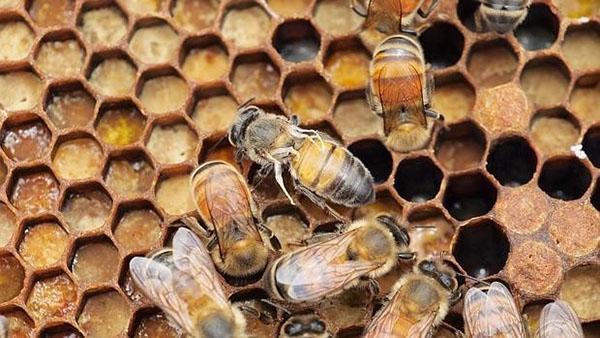 Bees, like other insects, are susceptible to various diseases. In addition to the negative influence of the external environment, cold, high humidity and other factors, there are dangerous infectious diseases of bees. If the cause of non-infectious diseases is most often the oversight of the beekeeper, then bacteria, viruses, pathogenic fungi, protozoa, mites of various species and parasitic insects become the source of infections.
Bees, like other insects, are susceptible to various diseases. In addition to the negative influence of the external environment, cold, high humidity and other factors, there are dangerous infectious diseases of bees. If the cause of non-infectious diseases is most often the oversight of the beekeeper, then bacteria, viruses, pathogenic fungi, protozoa, mites of various species and parasitic insects become the source of infections.
It is from infectious diseases spreading from insect to insect that the greatest number of adult bees and brood perishes. In order to take timely measures for treatment, as well as, if possible, prevent the problem, it is important to know the existing diseases of bees and their signs.
Varroatosis of bees
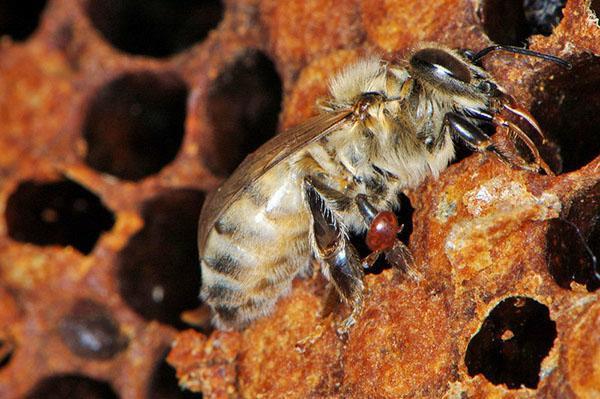 The causative agent of varroatosis of bees is a mite parasitizing on insects and in the hive, multiplying on the larvae and pupae of worker bees and drones, and then, after the release of insects, feeding and living off the bees. With a serious degree of infestation, ticks can be seen without much effort on the inhabitants of the hive, and on the brood, as well as on the combs and in the wastes of the bees.
The causative agent of varroatosis of bees is a mite parasitizing on insects and in the hive, multiplying on the larvae and pupae of worker bees and drones, and then, after the release of insects, feeding and living off the bees. With a serious degree of infestation, ticks can be seen without much effort on the inhabitants of the hive, and on the brood, as well as on the combs and in the wastes of the bees.
Insects affected by ticks weaken and die, while the source of varriatosis in bees most often becomes:
- infected individuals trapped in the hive when insects are introduced into a weakened family or when an apiary moves in areas where infection is spread;
- bearing larvae or the honeycomb mites themselves.
In order to prevent the development of the disease in the apiary, it is important to take a responsible approach to the purchase of new families, queens and brood, monitor the epidemic situation in the area where the farm is located, and monitor the cleanliness of the hives and combs.
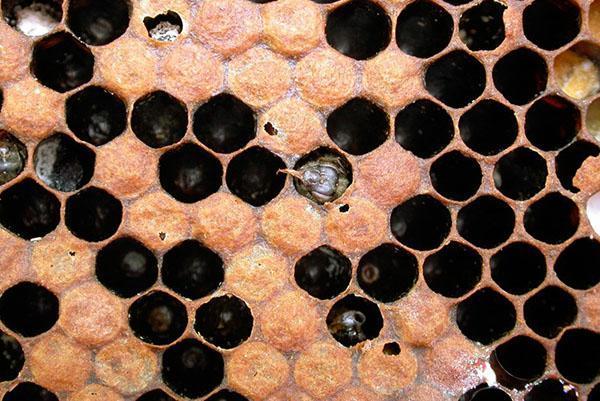 Varroatosis of bees is a quarantine disease, at the first signs of which strict sanitary and hygienic and restrictive measures are required, as well as several sessions of fumigation with such preparations for bees as Folbex and phenothiazine. As a therapeutic measure, the hives and their contents are treated with purified sulfur and varroatin.
Varroatosis of bees is a quarantine disease, at the first signs of which strict sanitary and hygienic and restrictive measures are required, as well as several sessions of fumigation with such preparations for bees as Folbex and phenothiazine. As a therapeutic measure, the hives and their contents are treated with purified sulfur and varroatin.
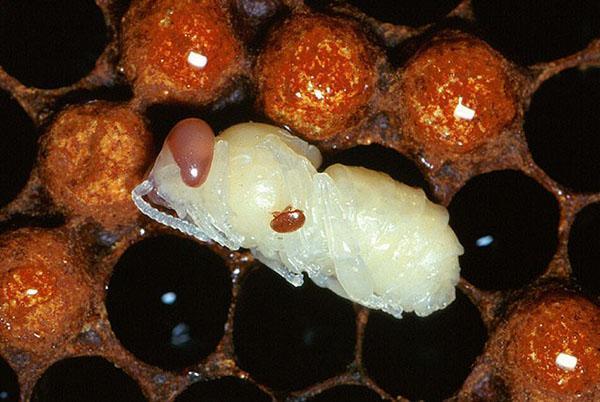 It will be useful for expelling harmful mites according to the ApiMax instructions for bees. The natural preparation has not only acaricidal, but also antibacterial, stimulating effect. After its application, the family gets rid of parasites and receives a natural, safe nutrition with biologically active substances.
It will be useful for expelling harmful mites according to the ApiMax instructions for bees. The natural preparation has not only acaricidal, but also antibacterial, stimulating effect. After its application, the family gets rid of parasites and receives a natural, safe nutrition with biologically active substances.
Nosematosis of bees
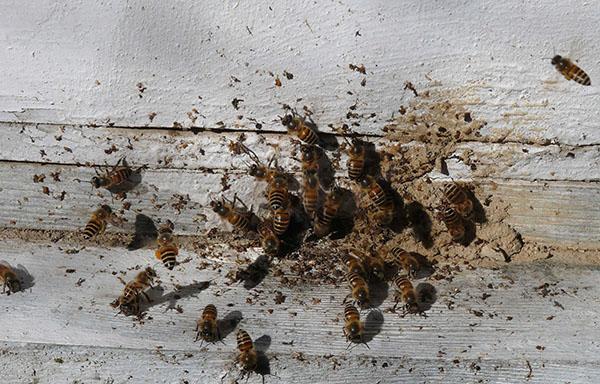 Diarrhea is a characteristic symptom of bee disease. Spots from liquid excrement with nosematosis are easy to notice in all places where insects are located. In addition, the disease caused by protozoa manifests itself in abundant under the sea and even the death of queens.
Diarrhea is a characteristic symptom of bee disease. Spots from liquid excrement with nosematosis are easy to notice in all places where insects are located. In addition, the disease caused by protozoa manifests itself in abundant under the sea and even the death of queens.
The root cause of nosema disease in bees sometimes becomes poor insect care, unacceptable impurities in feed, poor quality of wintering or too few young individuals in the hive.
All these factors weaken the family, and pathogens of nosematosis of bees that penetrate with water or feed into the hive enter the nutrient soil and begin their destructive activity. A sick individual can be recognized by a markedly enlarged abdomen. Unless urgent action is taken, bee disease threatens to lose most of the seven and weaken the remaining insects.
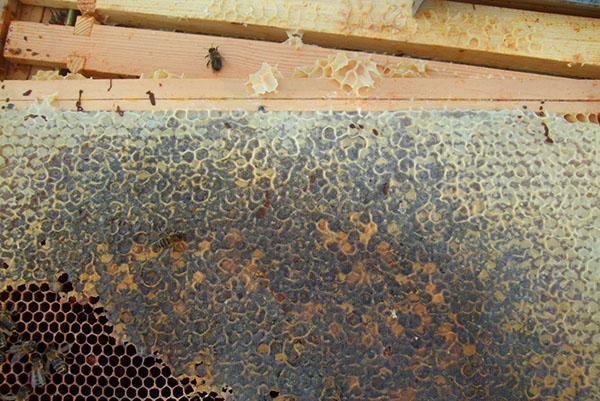 As a method of treating the disease, bees are offered sugar syrup mixed with fumagillin. For 25 liters of syrup, there should be 20 grams of the drug. This amount of the preparation for bees is sufficient for five families.
As a method of treating the disease, bees are offered sugar syrup mixed with fumagillin. For 25 liters of syrup, there should be 20 grams of the drug. This amount of the preparation for bees is sufficient for five families.
Disease prevention is no less important than treatment. With regard to nosematosis, it is necessary to arrange insect care, and at the slightest suspicion, they carry out a thorough mechanical cleaning of the hives, frames, all equipment with complete disinfection of everything with which the bees have contact.
Acarapidosis of bees
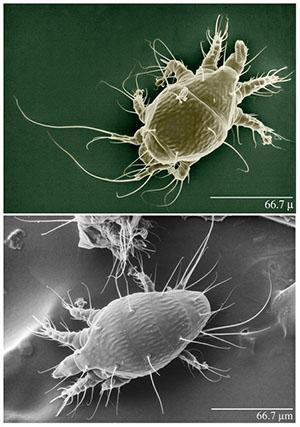 Another disease caused by harmful mites is bee acarapidosis. Parasites infect the respiratory tract of insects, and due to the smooth growth of the problem, it can be difficult to immediately identify bee disease and its symptoms.
Another disease caused by harmful mites is bee acarapidosis. Parasites infect the respiratory tract of insects, and due to the smooth growth of the problem, it can be difficult to immediately identify bee disease and its symptoms.
The first manifestations of the disease can be seen during a purifying spring flight, when a large number of insects with unnaturally twisted wings are found near the entrance. Such bees only crawl, unable to take off. The spread of the disease is facilitated by high humidity and the lack of systematic care for the apiary, and a particular danger comes from stray or insects acquired in an unchecked place.
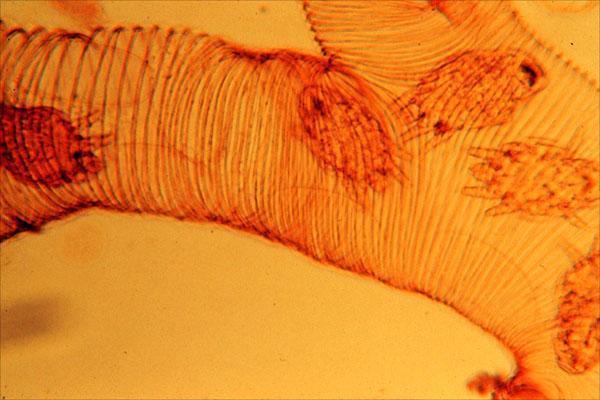 So that the apiary does not suffer from the disease of bees, it is necessary to resort to methods of its treatment at the first signs of acarapidosis. For this purpose, mass departures of bees are stimulated in every possible way. This can be done by placing the hives with their entrances to the south. As a result, the family will get rid of old and sick individuals. Abundant feeding at the time of the appearance of young bees before winter. We must not forget about medicines for bees. For acarapidosis of bees, it is effective to use Folbex and ApiMax based on coniferous extract for bees.
So that the apiary does not suffer from the disease of bees, it is necessary to resort to methods of its treatment at the first signs of acarapidosis. For this purpose, mass departures of bees are stimulated in every possible way. This can be done by placing the hives with their entrances to the south. As a result, the family will get rid of old and sick individuals. Abundant feeding at the time of the appearance of young bees before winter. We must not forget about medicines for bees. For acarapidosis of bees, it is effective to use Folbex and ApiMax based on coniferous extract for bees.
Ascospherosis of bees
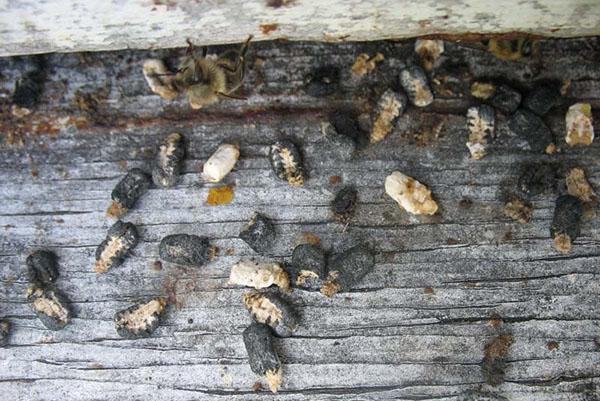 The spread of varroatosis in bees leads to the fact that insects become easy prey for other secondary infections. One of these diseases accompanying the attack of ticks is ascospherosis of bees caused by pathogenic fungi. The appearance of bee disease and its symptoms is facilitated by increased air humidity, rainy cool weather, when pathogens disperse and multiply most actively.
The spread of varroatosis in bees leads to the fact that insects become easy prey for other secondary infections. One of these diseases accompanying the attack of ticks is ascospherosis of bees caused by pathogenic fungi. The appearance of bee disease and its symptoms is facilitated by increased air humidity, rainy cool weather, when pathogens disperse and multiply most actively.
You can cope with the disease by strictly following the following recommendations of experienced beekeepers:
- insects are transferred to clean hives, with a strong defeat, all frames with signs of bee disease are put on wax;
- dead brood and insects are burned;
- instead of old queens, young healthy ones are planted, arranging a season without brood in order to prevent the spread of the disease;
- bees are offered healthy food, clean water, syrup as a top dressing;
- hives are insulated, cleaned;
- families reduce, and the weak, on the contrary, try to strengthen them with young growth and strong brood.
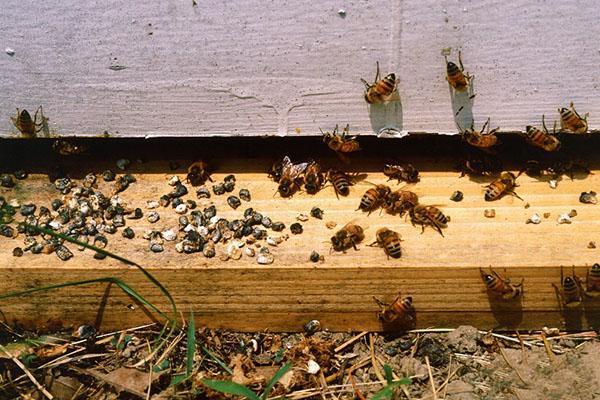 For treatment, such effective preparations for bees as Askosan and Unisan are used. In addition to these formulations, ApiMax is used for bees, according to the instructions, it is effective against tick attacks and helps to cope with infections caused by other types of parasites. As a preventive measure, the preparation based on natural plant extracts is also useful as a prophylaxis. In this case, it is added to a lump in the spring, immediately after the flight.
For treatment, such effective preparations for bees as Askosan and Unisan are used. In addition to these formulations, ApiMax is used for bees, according to the instructions, it is effective against tick attacks and helps to cope with infections caused by other types of parasites. As a preventive measure, the preparation based on natural plant extracts is also useful as a prophylaxis. In this case, it is added to a lump in the spring, immediately after the flight.
When the processing of hives, sorting and destruction of bees infected with ascospheosis and frames is carried out, it is necessary to clean, rinse and disinfect the equipment and work clothes of the beekeeper.
Foulbrood and other infectious diseases of bees
The list of infectious diseases of bees is not limited to the diseases described above. Insects and their brood in apiaries are affected by aspergillosis, die from paratyphoid fever and viral paralysis. In the latter cases, the bees lose their ability to move. Without proper treatment and prevention, families become weaker and may disappear altogether.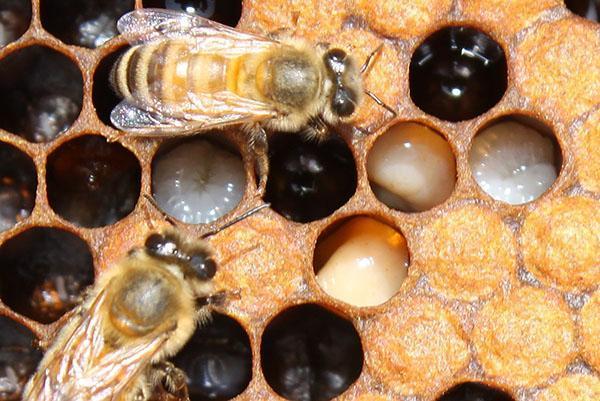
Serious quarantine infections include several existing varieties of foulbrood that infect brood.There are European and American types of disease. But in both cases, microscopic pathogens can maintain their activity for an incredibly long time on equipment, inventory, in the soil in an infected apiary. Infection enters the brood with feed taken from inseminated honeycombs, through contact with sick insects, through the use of dirty drinkers and feeders.
The external signs of this disease of bees are expressed in the variegated color of the brood, and at later stages in its death, turning into a brown-gray rotting mass with a corresponding smell.
If veterinarians confirm the presence of foulbrood of one type or another, the apiary is declared a quarantine zone. An area with a diameter of up to 15 kilometers is being closed. The bees are transferred to healthy hives. They are offered dough or syrup with one of the most effective preparations for bees. The affected brood is destroyed, the frames are reheated to technical wax.
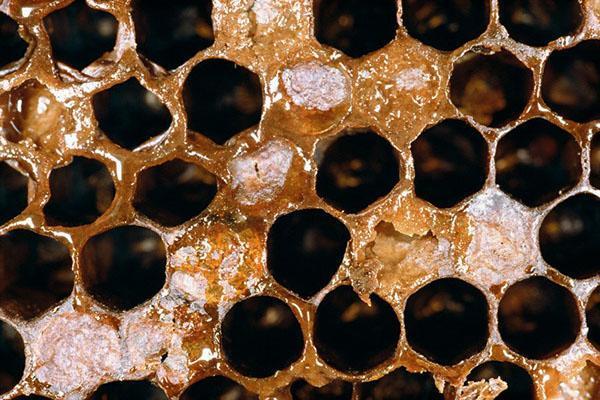 As a preventive measure for such a dangerous disease, it is proposed to carry out regular inspections of families, clean and disinfect hives, frames and all equipment used. At the same time, bees should be offered only high-quality healthy food, use clean water for drinking.
As a preventive measure for such a dangerous disease, it is proposed to carry out regular inspections of families, clean and disinfect hives, frames and all equipment used. At the same time, bees should be offered only high-quality healthy food, use clean water for drinking.
Bee preparations
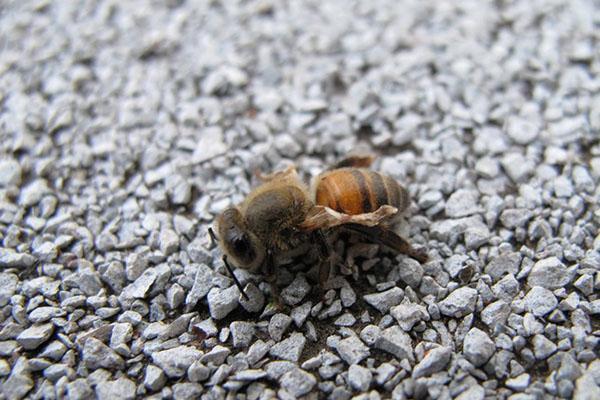 The already mentioned ApiMax can be considered an example of effective means of struggle. The product combines all the beneficial properties of coniferous extract for bees, as well as extracts of medicinal plants such as garlic, echinacea, pepper, eucalyptus and wormwood.
The already mentioned ApiMax can be considered an example of effective means of struggle. The product combines all the beneficial properties of coniferous extract for bees, as well as extracts of medicinal plants such as garlic, echinacea, pepper, eucalyptus and wormwood.
Trying not to use chemicals, some beekeepers resort to natural remedies, such as celandine infusion. This plant has proven to be effective against all types of foulbrood, varroatosis, nosematosis and ascospherosis. Medical treatment of bees with celandine is carried out as needed, and prophylactically, the hive, frames with insects and brood are irrigated in spring and twice in the second half of summer.
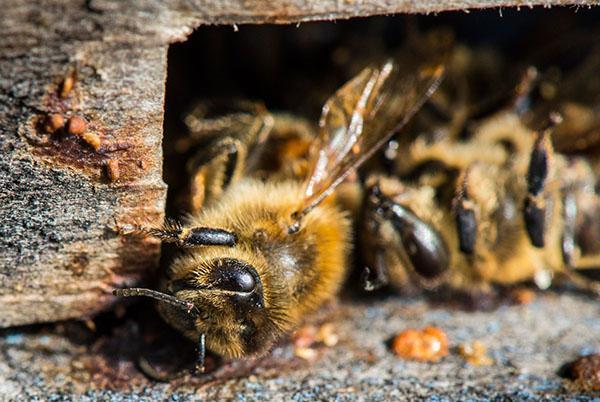 A good antiviral, antibacterial protection is a bee lozenge. This is a Russian drug that is effective against pathogens of such dangerous bee diseases as:
A good antiviral, antibacterial protection is a bee lozenge. This is a Russian drug that is effective against pathogens of such dangerous bee diseases as:
- filamentous disease immobilizing working insects;
- foulbrood of European and American type;
- paratyphoid and other diseases, a symptom of which is severe diarrhea;
- paralysis of bees, detected when hives are kept in an inappropriate form, accompanied by mass death and the appearance of individuals with undeveloped wings;
- saccular brood, threatening mass death of larvae.
According to the instructions for use, the lozeval for bees can be used as a therapeutic and prophylactic agent that increases the immunity of honey insects.
Features of non-infectious diseases of bees
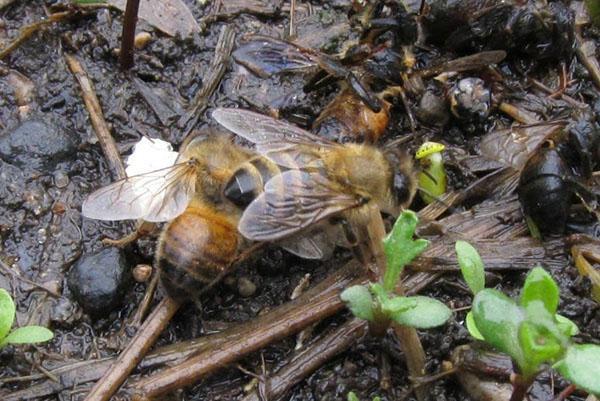 An apiary will not be able to live fully if insects on it are not provided with the proper conditions. Violation of the rules for keeping bees entails not only the weakening of families, but also the development of first non-infectious, and then infectious diseases.
An apiary will not be able to live fully if insects on it are not provided with the proper conditions. Violation of the rules for keeping bees entails not only the weakening of families, but also the development of first non-infectious, and then infectious diseases.
The causes of non-infectious bee diseases are:
- unhealthy food and dirty, unusable water;
- non-observance of the rules of hygiene, insufficient control over the state of the hives, frames and the amount of death;
- collection in areas treated with pesticides or other chemicals;
- insufficient warming of the hives or, conversely, their steaming;
- lack of a bribe in the absence of additional fertilizing.
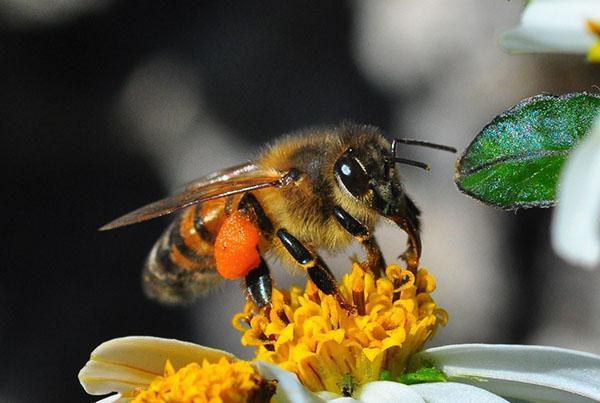 Among the common insect diseases caused by external causes, one can name pollen and nectar toxicosis. These diseases of bees are caused by the fact that the collection on the territory is carried out from dangerous plants. Honey insects with signs of poisoning are restless, they have convulsions, and in a severe stage, death. Without the help of the beekeeper, all families can be seriously affected. Crops that are poisonous for bees are destroyed, honey plants are sown in addition, if this is not possible, the hives will have to be transported to another area.
Among the common insect diseases caused by external causes, one can name pollen and nectar toxicosis. These diseases of bees are caused by the fact that the collection on the territory is carried out from dangerous plants. Honey insects with signs of poisoning are restless, they have convulsions, and in a severe stage, death. Without the help of the beekeeper, all families can be seriously affected. Crops that are poisonous for bees are destroyed, honey plants are sown in addition, if this is not possible, the hives will have to be transported to another area.
Toxicosis caused by chemicals and honeydew is dangerous for bee colonies. In this case, it is necessary to take all measures to improve the health of the diet and to protect the bees from sources of danger. As a method of treating the disease, bees are offered pure sugar syrup and water.
 Novice beekeepers often become anxious when the queen begins to lay unfertilized eggs. This condition is not a sign of illness, but only means that it is time for the drones to appear in the hive. It is thanks to parthenogenesis in bees that males are formed, which subsequently fertilize the uterus. However, in some cases, it is still worthwhile to be wary. If the uterus fills the cells intended for workers with drone eggs, this may indicate the need to replace it.
Novice beekeepers often become anxious when the queen begins to lay unfertilized eggs. This condition is not a sign of illness, but only means that it is time for the drones to appear in the hive. It is thanks to parthenogenesis in bees that males are formed, which subsequently fertilize the uterus. However, in some cases, it is still worthwhile to be wary. If the uterus fills the cells intended for workers with drone eggs, this may indicate the need to replace it.
Diseases of bees and their signs - video